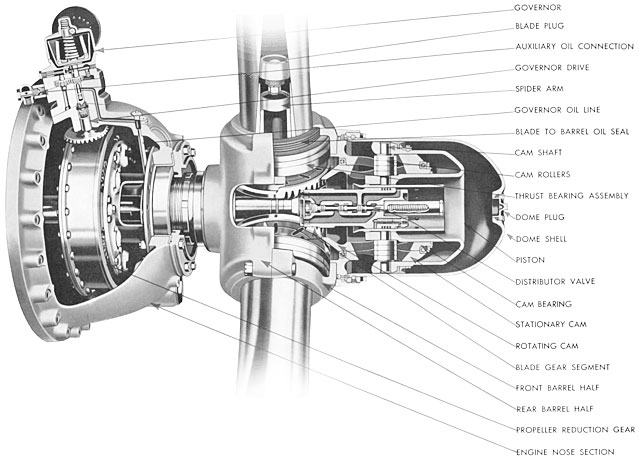Rapid development of aircraft design in the 1930s required many related innovations, including propeller design. The hydromatic propeller by Hamilton Standard marked a significant advance over the counterweight-type, controllable pitch propeller. The first test flight of the prototype took place in 1938: the public demonstration was made by a United Air Lines DC-3 over New York City on April 6, 1938. It played a distinguished role in allied combat aircraft in World War II. Its continuing development has incorporated many features used on later aircraft, including today's turboprop planes.
The hydromatic propeller was designed for larger blades, faster rate of pitch change, and wider range of pitch control than earlier controllable-pitch propellers. Improvements from a two-position controllable to the constant- speed type propeller were not equal to the demand of high-output engines or rapid airplane maneuvers. The variable-pitch aircraft propeller allowed the adjustment in flight of blade pitch, making optimal use of the engine's power under varying flight conditions. On multi-engined aircraft it also permits feathering the propeller--stopping its rotation--of a nonfunctioning engine to reduce drag and vibration.
The application of oil pressure to both sides of the actuating piston provided increased capacity and the capability of feathering or unfeathering by a single control knob. The precise pitch control permitted post-war refinements such as synchronization and synchrophasing of multiple engine to eliminate "beats." Reverse pitch permitted a shortened landing roll on large commercial transports.
The artifact is Model 23E50 Hamilton Standard quick-feathering hydromatic propeller, typical of many thousands produced from 1938 to 1945. It was set aside as an example from an early production run and donated by Hamilton Standard to the museum.



